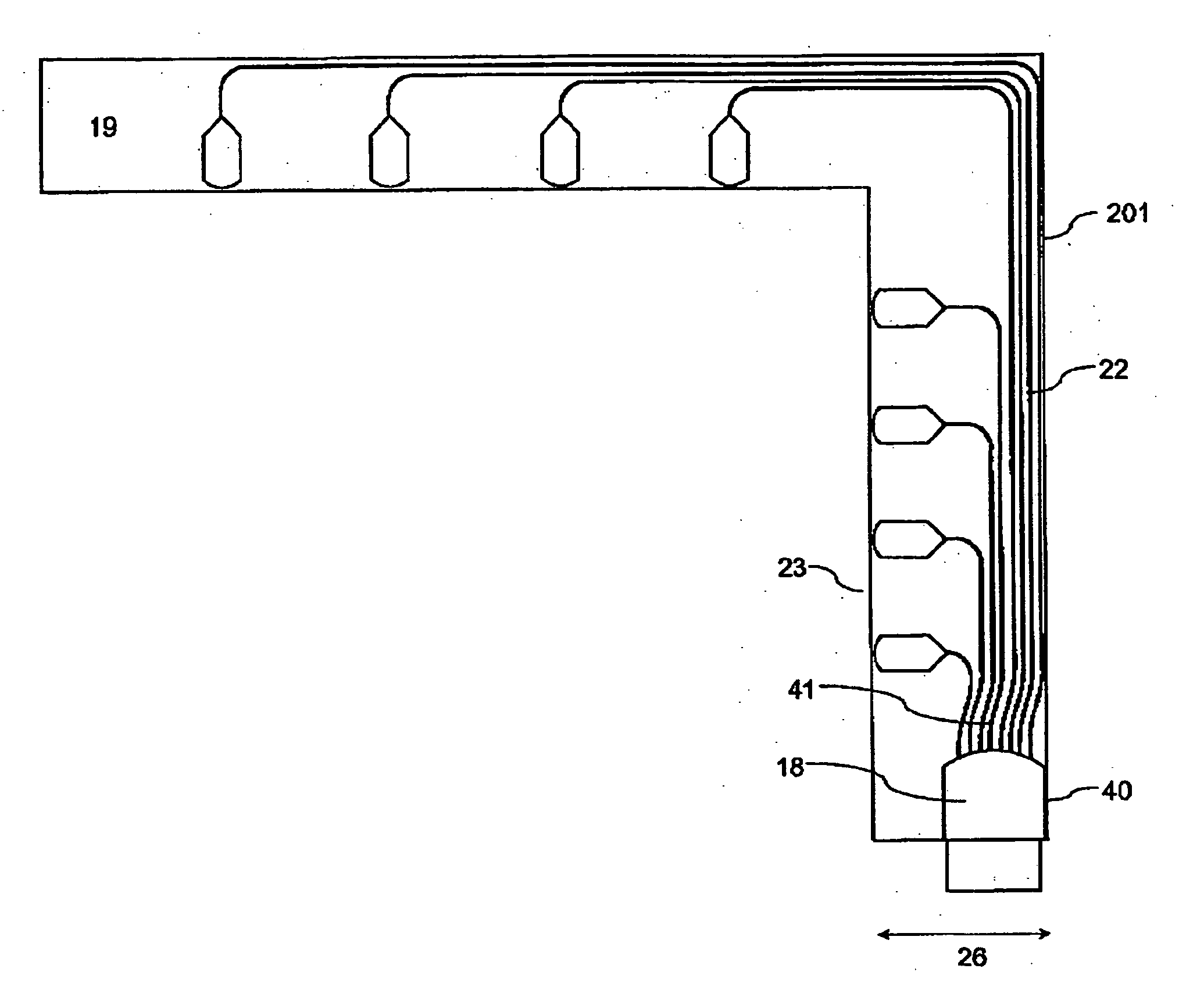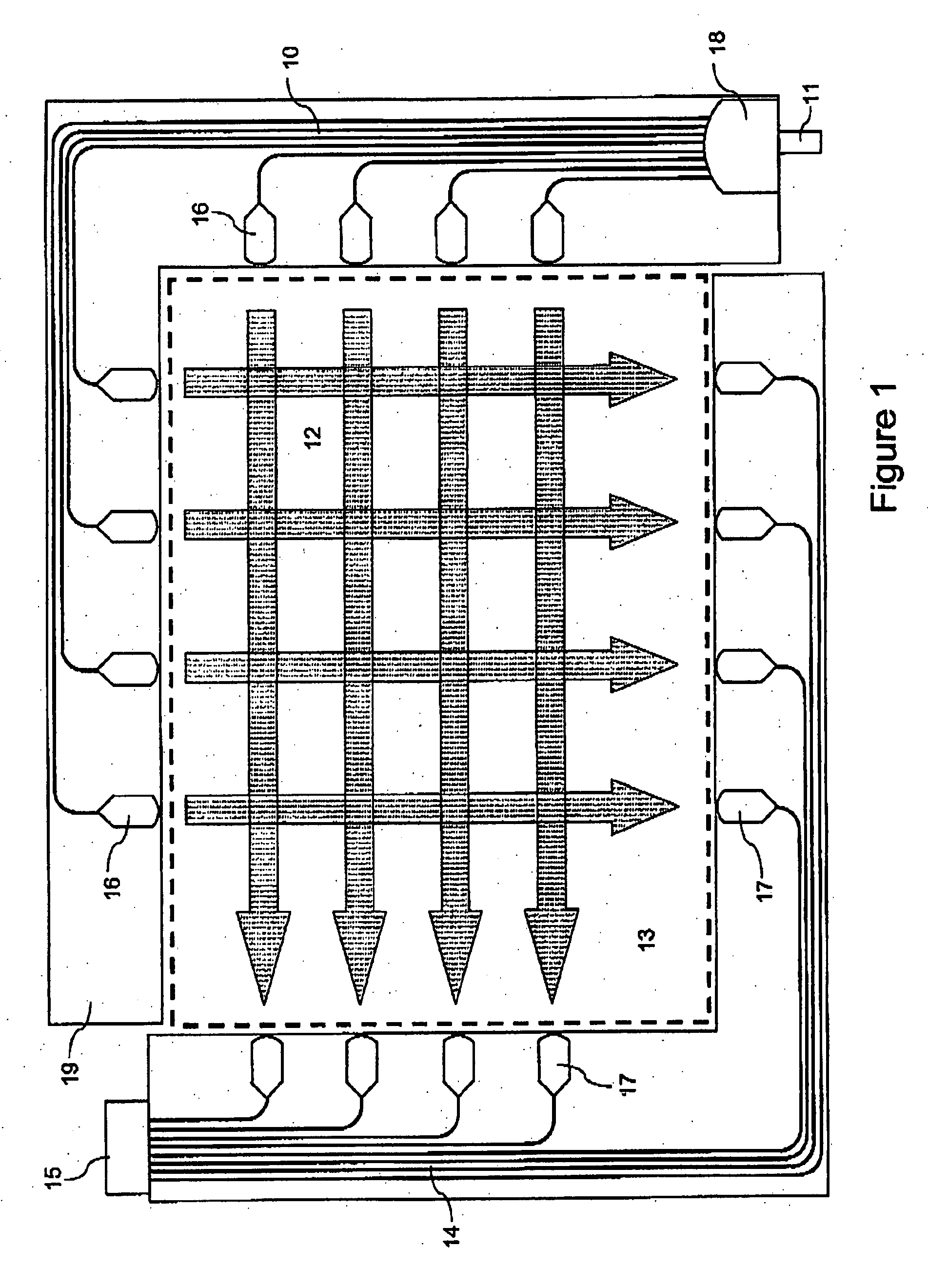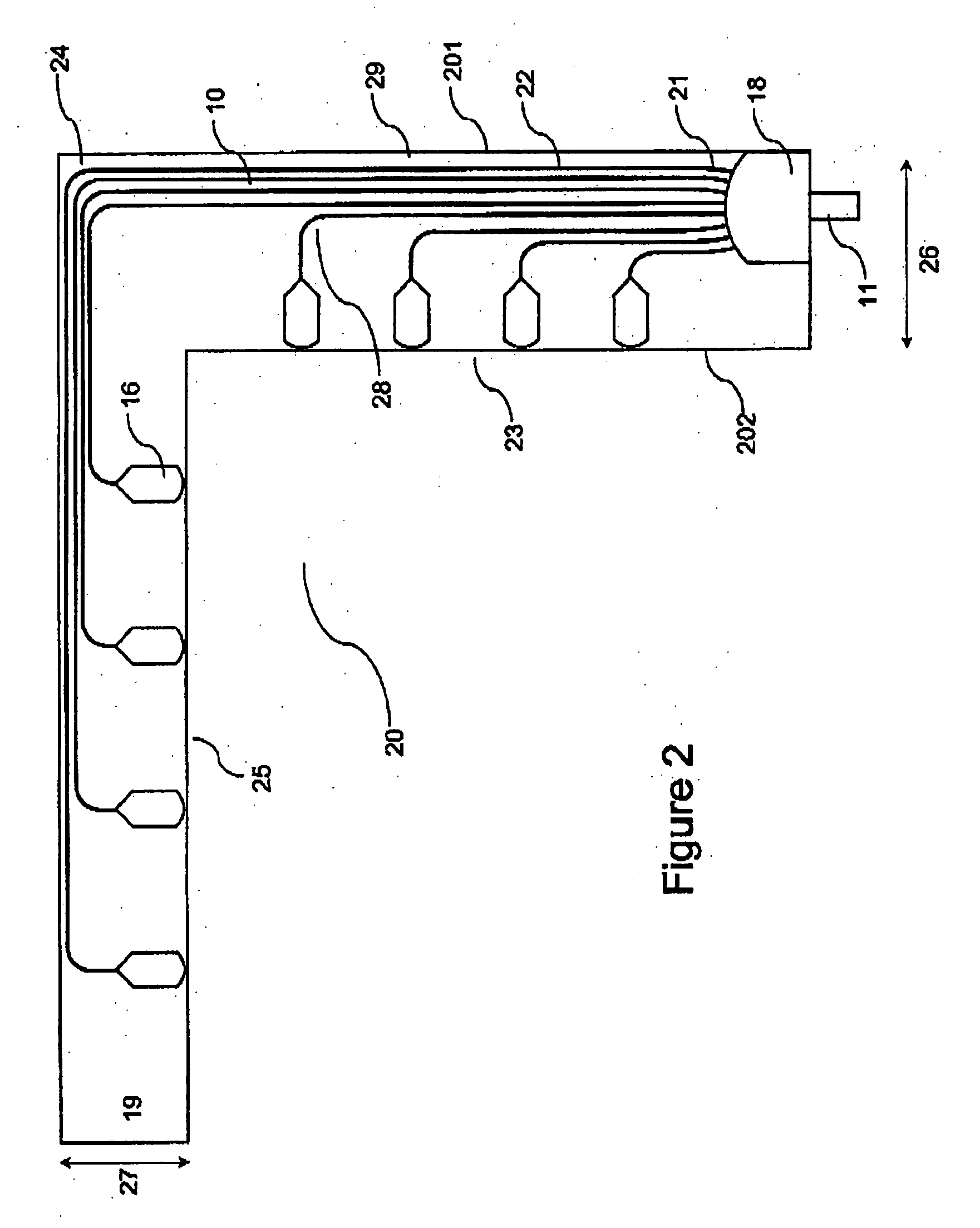Waveguide Configurations for Minimising Substrate Area
- Summary
- Abstract
- Description
- Claims
- Application Information
AI Technical Summary
Benefits of technology
Problems solved by technology
Method used
Image
Examples
first embodiment
[0052] According to the present invention, illustrated in FIG. 4, the gap 29 can be reduced by offsetting the 1×N tree splitter 18 with respect to the waveguide fairway 22, such that the edge 40 of the splitter's diffractive slab region coincides with the outermost waveguide of the fairway 22. The outer edge 201 of the substrate 19 can then be brought to within the dicing margin of the splitter edge 40 and the fairway 22. This offset is achieved by introducing an S-bend 41 into the waveguides after they emerge from the 1×N tree splitter, and reduces the width 26 of the (wider) first leg 23 of the substrate 19 by 0.8 mm. On the receive side, a similar S-bend could be used to eliminate any ‘dead zone’ between the edge of the multi-element detector and its array of detector pixels.
[0053] We now turn to consideration of the contribution to bezel width made by the waveguide bends 28. For right angle bends 28 as shown in FIG. 2, the contribution to bezel width is equal to the bend radius,...
second embodiment
[0054] According to the present invention, the bend-related contribution to bezel width can be reduced by changing the manner in which the waveguides 10 or 14‘peel off’ from their waveguide fairway towards their respective in-plane lenses 16 or 17. Instead of having each transmit waveguide 10 peeling off in turn from the inside of the fairway 22 as shown in FIG. 2, FIG. 5 shows a novel waveguide layout wherein, along at least a first side 23 of the L-shaped substrate 19, each transmit waveguide 10 peels off from the outside of the fairway, thereby crossing all of the remaining waveguides en route to its in-plane lens 16. The ‘inside’ of the waveguide fairway 22 is defined as the side closer to the in-plane lenses 16.
[0055] Unlike the case of an electronic circuit, where such crossings would be forbidden because of electrical shorting, optical waveguides can cross each other with impunity provided the crossing angle θ, as shown in FIG. 6, is sufficiently large. Providing the crossing...
third embodiment
[0057] Nevertheless the ‘outside peel-off’ benefit can be made to apply along the second side 25 by other variations in the waveguide layout. For example FIG. 7 shows a waveguide layout according to the present invention, in which the waveguides 10 in the second fairway 50 gradually bend away from the inner edge 51 towards the outer edge 52 before making the right angle bend 28 towards their respective in-plane lenses 16. With this configuration, the width 27 of the second side 25 is also reduced by an amount equal to the radius of the bends 28, i.e. 1.5 mm, and a similar width reduction would be obtained on the corresponding side of the receive substrate.
[0058] Returning to FIG. 6, we now consider what it means for the crossing angle θ to be ‘large enough’ for there to be negligible crosstalk and scattering loss at a crossing point 60. For crossings involving single-mode waveguides, it is generally accepted that a crossing angle of 20° or more is ‘large enough’, and even if the wav...
PUM
 Login to View More
Login to View More Abstract
Description
Claims
Application Information
 Login to View More
Login to View More - R&D
- Intellectual Property
- Life Sciences
- Materials
- Tech Scout
- Unparalleled Data Quality
- Higher Quality Content
- 60% Fewer Hallucinations
Browse by: Latest US Patents, China's latest patents, Technical Efficacy Thesaurus, Application Domain, Technology Topic, Popular Technical Reports.
© 2025 PatSnap. All rights reserved.Legal|Privacy policy|Modern Slavery Act Transparency Statement|Sitemap|About US| Contact US: help@patsnap.com



